Drawing slides help students grasp and integrate information
Fortunately, we now
recognize that students learn in different ways and that to teach effectively
we need to differentiate instruction. Many recent studies have shown what
classroom teachers have observed for years: involving multiple senses in the
educational process can improve learning outcomes. Most students, in fact,
typically use a combination of three learning styles: visual (29%), auditory
(34%), and haptic (37%). The advantages of haptic learning (from the Greek haptikos, "able to touch") are
starting to be recognized, for the digital as well as the traditional
classroom.
Haptic or tactile learners
do well with "hands on" activities. They like to be moving—doing artwork, for
example, or doodling or tracing words and pictures—and they succeed when
they’re given tasks requiring manipulation. When touch is combined with other
senses, especially sight, it increases the amount of information sent to the brain.
Direct, “hands on” involvement helps students grasp concepts and internalize
them. By drawing on multiple-mouse slides, for example, they can get a “feel”
for the information you’re teaching. When you add drawing activities to a
lesson, therefore, you can help students process information, integrate it, and
retain it better.
Experts recommend varying the mode of learning approximately
every 20 minutes. Incorporating drawing slides into your Mouse Mischief lessons
is an easy way to follow this guideline.
Ideas for incorporating
drawing slides in multiple-mouse lessons
Complete, trace, or draw objects. One easy way to include haptic learning is to include drawing slides on
which students can complete partially drawn objects, trace complete objects
(like polygons), or draw objects to get a feel for them. These two slides, from
the sample lesson Mouse
Mischief Angles, combine
different uses of drawing slides to give students lots of opportunity to get
the concept of different angles firmly “in hand.”
----------
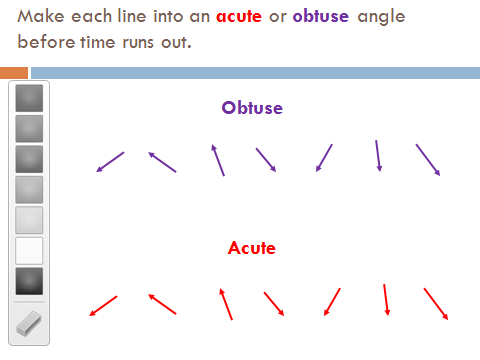 ----------
----------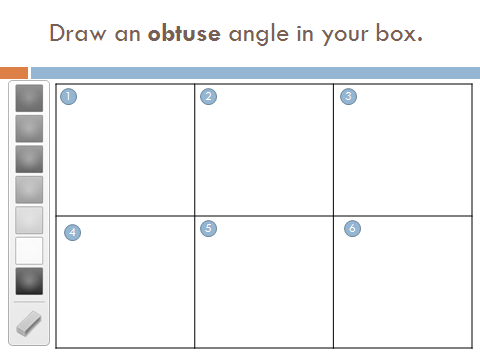
The following example from the sample lesson Words
for Weather demonstrates how using a drawing activity can help reinforce word
associations and ideas, for ESL students or all students.
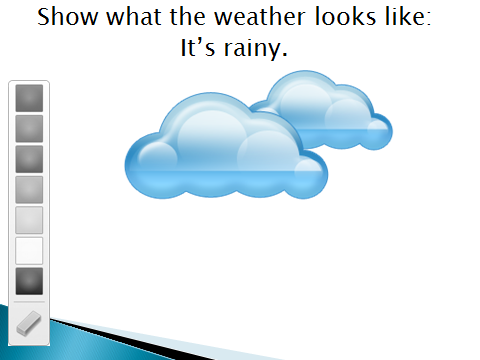
Draw processes,
relationships, or concepts. Drawing slides can be a big help when you want
to give students active ways to grasp and integrate complex concepts or
relationships and to think through
relationships haptically. On this slide, for example, taken from the sample
lesson Mouse
Mischief Tides, students can feel how
the tides and moon are relatedand show what they have learned about tides
by drawing their understanding of the relationship.
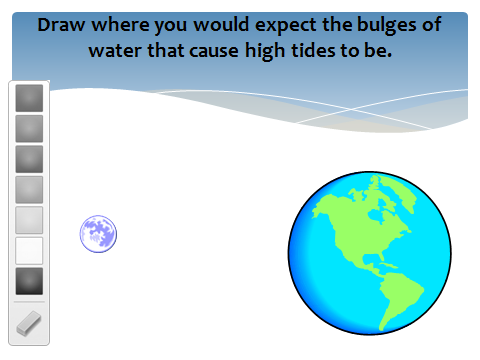
When you teach the Age of Discovery,
wouldn’t it be nice to give your students practice drawing the route the Vasco
de Gama took on his first trip to India? This helps them locate spatially the European
and Indian continents and understand the relationship between them. It also
gives them a feel for how much ocean and how many dangers he and his crew had
to face.
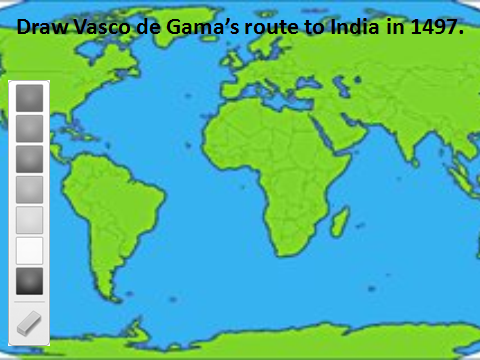
You could also use a drawing slide when
you teach geometric figures and perspective to have students practice imagining (seeing and feeling) what each
three-dimensional shape looks like in two dimensions (sphere becomes circle,
cube becomes square).
Matching,
coloring, and other uses of drawing slides. You can use drawing slides to
give your students lots of other opportunities for haptic learning, like filling
in objects with a color, drawing lines to match words and objects, or drawing
arrows to indicate a sequence of steps in a process.
All drawing slides work best when small
groups of students take turns drawing, so factor this into your lesson plan.
Haptic learning is catching on.
Including drawing slides in your multiple-mouse lessons can help you incorporate
this learning style in your teaching for the benefit of all your students.